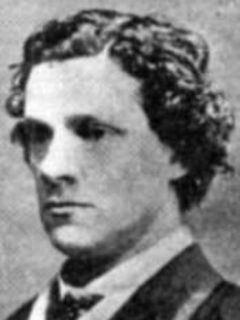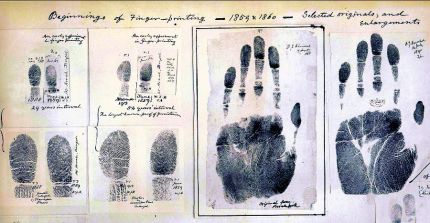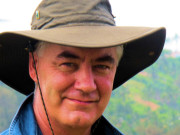
William James Herschel 1833-1917
William James Herschel was born in Slough on 9 January 1833. He was a grandson of astronomer Sir William Herschel, and son of John Herschel. His father largely followed in the footsteps of his father to also become an astronomer but it seems that he wanted his own son to find a different career.
William James joined the East India Company and in 1853 he was posted to Bengal. Eventually he became a member of the Indian Civil Service and was posted to Jungipoor. In 1858 he drew up a contract with a local man for the supply of road building materials.
In order to ensure the proof of the identity of the supplier, Herschel insisted that the businessman made a hand print on the document. It seems that the man felt that the contract was more binding with personal contact rather than a simple signature which can be forged. This may have been partly down to a superstitious belief on the part of the signatory as well not unlike the idea that the taking of a photograph takes away part of the soul.
The use of fingerprints both in business transactions and criminal investigations goes back to prehistory particularly in the Middle and Far East. The prints were made on clay tablets or seals.
In 1877, Herschel was appointed Magistrate of Hooghly, West Bengal, and introduced the taking of fingerprints of pensioners to prevent fraudulent claims. He later introduced the taking of fingerprints of criminals to prevent the hiring of an imposter to serve their gaol sentences.
Herschel never realised the potential for taking fingerprints at the scene of a crime and therefore to catch criminals, he merely developed the technique of taking prints from people’s hands to use as an administrative tool for positively identifying people. Francis Galton and Edward Henry followed up Herschel’s work to develop the use of fingerprints to fight crime.
Modern uses of fingerprints
Criminology
These days fingerprints are key in the use of criminology. In the UK IDENTI, the central database for holding, searching and comparing biometric information, contains the fingerprints of over 7 million people.
Log-in authentication
Electronic fingerprint readers are being used for security applications such as log in for computer users, electronic registration, library access and other uses.
William Herschel's Personal Life
On 19 May 1864 he married (Anne) Emma Haldane, youngest daughter of Alfred Hardcastle of Hatcham House, Surrey. She died in 1873 giving birth of their second son, having borne him 3 other children:
-
Margaret Eliza Emma Herschel (1865-1880)
-
Emma Dorothea Herschel (1867-1954)
-
Reverend Sir John Charles William Herschel, 3rd Baronet (1869 - 1950)
-
Arthur Edward Hardcastle Herschel (1873-1924)
William James lived at Warfield in Berkshire. Upon his death on 24 October 1917 (aged 84), the baronetcy passed to his son.
My name is Gary Flint. I'm author, photographer & illustrator for Postcards from Slough. If you wish to make any comments on the contents of the website please click on the ladybird below:
Gary Flint
08/03/1961 - 09/04/2019
Postcards from Slough is an independently funded website. We are open to offers of sponsorship from companies that have any connections to the town. To contact us please click on the ladybird below:
Chalvey Community Forum
Postcards from Slough is linked with a local action group the Chalvey Community Forum. The group liaises with various local organisations in order to improve the quality of life for residents in the ward of Chalvey and Salt Hill. To learn more please click on the maidenhair leaf below:
Museum of Berkshire Aviation
I volunteer as a guide at the Museum of Berkshire Aviation. It is a special museum and if you would like to know more about the museum then please click on the motif below:
To learn more about the museums activities while staying within this website click on the tab at the top of the page or on the motif below:
Graces Guide
Postcards from Slough uses some images from Grace's Guide. Click on the button below:
British Listed Buildings
Postcards from Slough contributes material to British Listed Buildings and uses the site for cross referencing purposes. Click on the button below:






